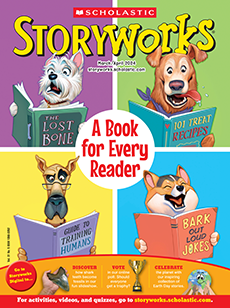Native peoples in Australia carve or paint images onto wooden sticks to spread news of war, peace, and other important events. Messengers travel by foot to deliver them far and wide.
For more mail-related reading, check out “Snow Mail,” a funny poem about two cousins who are pen pals, and our May/June 2020 debate, “Should You Handwrite Thank-You Notes?”


